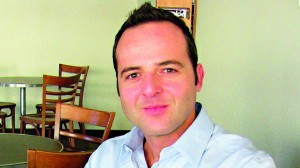 For the first time this year, people living with HIV (PLHIV) had the opportunity to meet and discuss their current priority and concerns with their two newly elected W.A. National Association of People With HIV Australia (NAPWHA) representatives, Diane Lloyd and Ash Jones
For the first time this year, people living with HIV (PLHIV) had the opportunity to meet and discuss their current priority and concerns with their two newly elected W.A. National Association of People With HIV Australia (NAPWHA) representatives, Diane Lloyd and Ash Jones
Almost all fifteen attendees of the first WA PLHIV Community Forum for 2013 welcomed the constructive and mature proceedings of the meeting. Diane Lloyed commented “People seem to have a lot of ideas and suggestions to go forward. It’s great to have community involved, and the ongoing commitment from 10 to 12 people.”
NAPWHA and the WA AIDS Council (WAAC), have been supporting the W.A. PLHIV Community Forums, since the collapse of the HIV/AIDS Peer Advisory Network (HAPAN) in 2012. Currently WAAC, provides organisational support through venue hire, catering and promotion of the event to PLHIV. NAPWHA has also invested in supporting the PLHIV community in WA by providing professional facilitation and when possible executive leadership from the NAPWHA board.
Although PLHIV Community Forum is not a formal organisation, the meetings have been significant in achieving ; an agreed process for how WA NAPWHA representatives are elected, defining the scope and limitations of their role, a yearly structure of forums to canvass priority areas of concerns which is then reported nationally, and a face to face opportunity for broader PLHIV community engagement and networking in WA.
Even with the appreciated and ongoing support from NAPWHA and WAAC, some dissatisfaction became apparent when the topic of how to improve community engagement was discussed. Some individuals expressed their frustration of having to go through WAAC to organise an event (as it has a trusted and confidential contact list). Stigma and unwanted communication of an individual’s HIV status may also be preventing many from engaging. Consideration was given as to how the PLHIV Community Forum could be more broadly promoted while maintaining the privacy of individuals and the event. It was acknowledged that how we engage with the community is an important topic which required further dialogue at future events.
The role of the openly HIV positive representative on the WAAC board was also discussed. Of particular concern was the process for selecting the individual. Previously HAPAN would recommend an individual to the WAAC Board for endorsement and adoption. Over more recent years the individual is internally appointed without consultation from the HIV community. This has lead to perceptions of cronyism by some, as there is no apparent formal nomination process, selection criteria or accountability to the community (through reporting or direct election). The performance of the openly HIV positive representative on the WAAC board was not in question. Community members attending the forum, requested that a letter be sent to the WAAC Board communicating that the current arrangement was not acceptable. Instead proposing that a new position and a more transparent and accountable process be formulated. More broadly, there seems to be little coordination of people representing PLHIV on various health bodies and agencies in W.A. Most forum members believed that people involved in representing the interests of PLHIV could be encouraged to attend the community forums and feedback updates and progress.
Barriers to access HIV medication and the potential introduction of co-payments were explored. Waiting times (e.g. which can sometimes stretch out to between 2-4 hours at Royal Perth Hospital Out Patient Pharmacy) were considered a significant barrier to approximately half the people who attended. With many preferring the option of a community pharmacy. Co-payments for HIV medication was the highest concern to the other half of forum members, particularly individuals working part time or on low income. How Serco, the new private for profit operator would conduct itself at the new Fiona Stanley Hospital is a source of uncertainty and anxiety for some. The two main reasons expressed why a co-payment could impact negatively onto the community included; firstly, ad-hoc dosing, leading to the increased possibility of individuals developing resistance which then holds back efforts to control and minimise the emergence of resistant virus in the community, and secondly, delayed treatment uptake, which means that the community viral load could increase dramatically hindering HIV prevention efforts. It was widely accepted by the forum members that the small short term monetary gain of a co-payment would quickly be eliminated by the large medium and longer term costs of increased HIV infections in the community. The forum members resolved to request WAAC to convene a round table meeting of health agencies, stake holders and decision makers to clarify and justify potential changes to co-payment arrangements for HIV medication.
WAAC and NAPWHA have given notice to attendees their intention to pull back and let the WA HIV community conduct future events. In part this acknowledges the constructive progress that has been made by the individuals who have contributed to the W.A. PLHIV Community Forums. It may also remind us that sustained HIV advocacy in WA will over the long term need to comes from, talented, passionate, committed, empowered and altruistic individuals that reside in W.A. As the community builds confidence in each other and develops a shared vision forward, the prospect and desire for an independent and fully funded peak PLHIV organisation in W.A. will increase. In the mean time, the community through the forums will have an opportunity to demonstrate how it can step up, collaborate and create value for all communities. The next PLHIV Community Forum is scheduled for Saturday the 13th of July.
www.positiveadvocate.com.au
Cipriano Martinez





